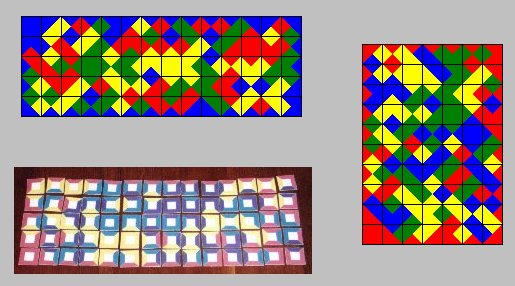
| Colors | One-sided Pieces | Two-sided Pieces | ||
|---|---|---|---|---|
| Number | Examples | Number | Examples | |
| 3 | 24 | 6x4 rectangle | 21 | |
| 4 | 70 | 10x7 rectangle, 14x7 rectangle | 55 | 5x11 rectangle |
| 5 | 165 | 15x11, 33x5 rectangles, notched square | 120 | 12x10 rectangle |
| 6 | 336 | 21x16, 48x7 rectangles | 231 | 21x11, 7x33 rectangles |
| 7 | 616 | 44x14 rectangle | 406 | 29x14 rectangle |
| 8 | 1044 | 36x29 rectangle, square ring 38x38-20x20 | 666 | Two 37x9 rectangles |













